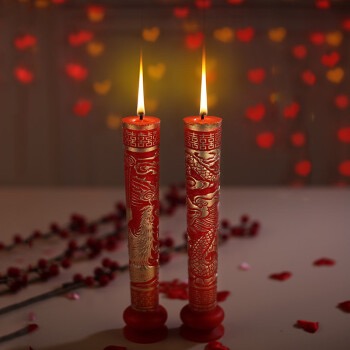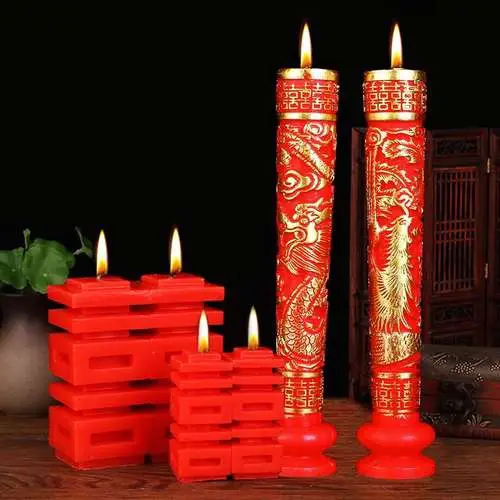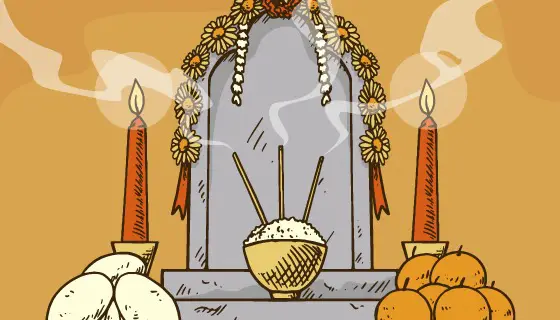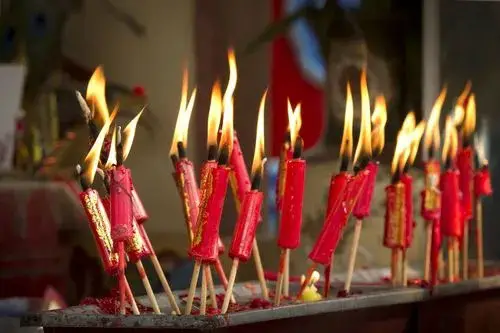History has proven that candle-making and usage developed independently in many countries. However, China is recognized as one of the first countries to make and use candles. Candles were used not only as lighting in ancient China but also for religious and spiritual purposes. This post will cover all the details about Chinese candles, including; the materials they were made of, who invented them, when they were invented, what they represented in Chinese culture, and what they were used for. Also, read on to find out the meaning of red Chinese candles.
Did China have candles?

China was one of the first countries to make and use candles, and many believe that this is where candles originated. According to archaeology, the first Chinese candles were made during the Qin Dynasty, between 221 and 206 BC, from whale fat. The discovery of whale fat candles in Qin Shi Huang‘s mausoleum, the first emperor of the Qin Dynasty between 221 and 210 BC, has proven that ancient China had candles.
In addition to the discovery of whale fat candles, bronze figures painted with candles have also been excavated, further proving the existence of candles in ancient China. Historians have also found numerous records and objects that imply candles were used in the ancient Chinese dynasties. Also, it is believed that Emperors during the Han Dynasty gave and received candle gifts, and the excavation of candle accessories like candle holders from that era supports these claims.
What are Chinese candles made of?
Initially, Chinese candles were made of whale fat, and as the years went by, they evolved and began to be manufactured from insect wax and seeds. These candles were then wrapped in rice paper. Decades later, candle wicks made from rolled rice paper were introduced.
In 1st century China, “candlefish” candles made from a kind of fish called eulachon were commonly used. Eulachons produced high-fat levels; when they dried, they were lit as candles.
What do candles represent in China?

In China, candles represent happiness, hope, good fortune, nostalgia, vibrant energy, and prosperity. The Chinese associated the psychological comfort that lit candles provided on nights with brightness and hope. Chinese candles were also used to signify joy and warmth no wonder they were commonly used during joyous events like weddings.
In Chinese culture, candles also represented a bond between family, friends, or lovers. Additionally, in ancient China, dedication and sacrifice were culturally symbolized by candles. Lastly, human life was popularly likened to candles in Chinese culture. Today, Chinese candles are commonly used in Feng Shui to represent vibrant, good, and positive energy within a household and to “purify” the space.
Chinese candles history
Who invented Chinese candles?
The invention of Chinese candles has not been credited to anyone, although historians agree that the Chinese were among the first to invent and use candles. According to archaeology, whoever invented the Chinese candles must have existed during the Qin Dynasty era (221 – 206 BCE) since Chinese candles date back to that period.
When were Chinese candles invented?
Chinese candles are believed to have been invented during the Qin Dynasty (221 – 206 BC), although they are believed to have become popular during the Tang Dynasty (618 -907 CE). Numerous records of Chinese candles date back to the Tang Dynasty. The first Chinese candles invented were made of whale fat but evolved over the years.
Historians suggest that around 40 BC, candle wicks were invented. During the Qing and Ming dynasties, the manufacturing and usage of Chinese candles skyrocketed, and they became common in households.
How were Chinese candles used?

Besides lighting, Chinese candles were used to tell the time in ancient China. The Chinese noticed that candles burned fairly consistently and therefore began marking the candles with hours to help them estimate time. These candles were called candle clocks and were popular during the Song Dynasty (960 – 1279). Candle clocks evolved into scented candlesticks that helped them estimate hours by simply noting the change in fragrance.
Also, candles were used during prayer as it was believed that ancestors or gods were summoned as smoke wisps. During memorials, candles were used to “guide” the departed souls to their homes, preventing them from accidentally wandering to other homesteads.
What is the symbol of red candles in Chinese culture?

Red candles in Chinese culture generally symbolize prosperity, harmony, good fortune, wealth, fame, happiness, success, warmth, and joy. Also, red candles were used to predict the success of marriage in ancient China. The groom and bride would light a red candle with wicks on both ends, leaving it to burn all night. If neither ends extinguished prematurely, then it was believed that the marriage would be successful.
Additionally, red candles were lit to signify new beginnings. Because red candles have a positive connotation among the Chinese, they were, and still are, customarily used during joyous celebrations like weddings and festivals like Chinese New Year.
Chinese candlesticks
Today, Chinese candlesticks are popularly used during festivals like the Chinese New Year, Lantern Festival, Mid-Autumn Festival, and Hungry Ghost Festival. During the Spring Festival, Chinese candlesticks are lit on the last 15th day of the festival to guide lost spirits to their homes.
Also, these candlesticks are lit during Chinese New Year to welcome and attract good fortune in the coming year. Lastly, Chinese candlesticks are lit alongside incense in Buddhist shrines or images as a form of worship and respect.
Conclusion
The Chinese are among the first people believed to have made and used candles. Not only were these candles a source of light, but they were also used for spiritual purposes. Chinese candles represented luck, joy, and prosperity in ancient China as well as modern China. Today, these candles are still a big deal in Chinese culture, especially during festivals like Chinese New Year.
